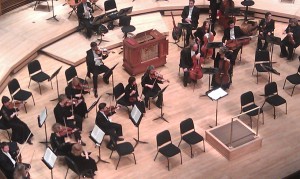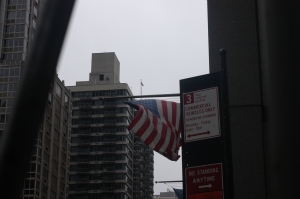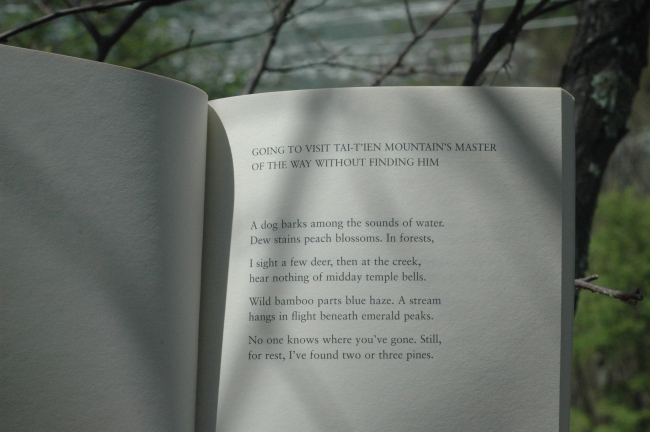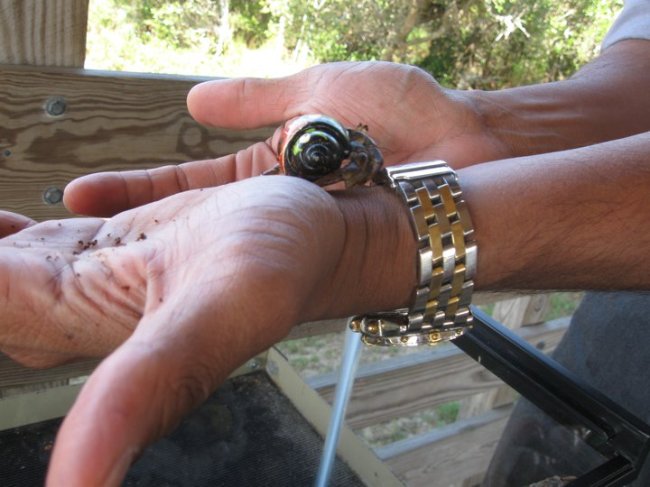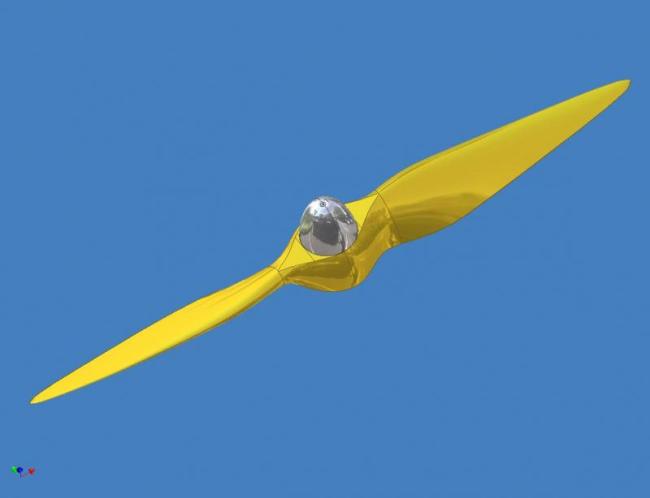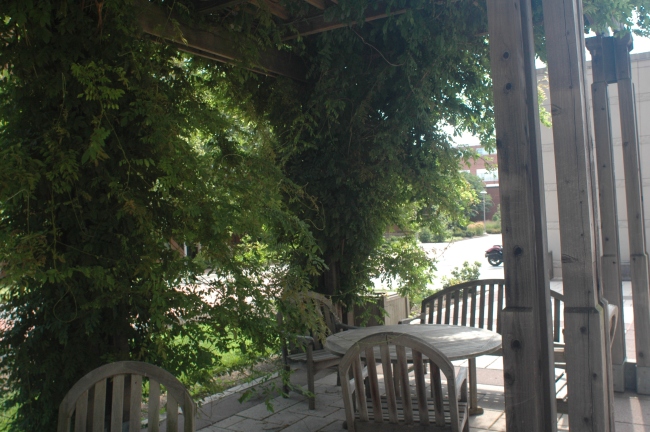I had the opportunity to try and practice silent meditation over 11/17-18. Initially I researched meditation retreats. But the fact that I had to pay $100 or so for a room and the guided meditation would not be on my terms had me go back to the drawing board and wonder whether I could do this sitting in my own home. The advantage of going to a meditation retreat is that there are no distractions such as chores and the territory is neutral. Still, I felt I could give being in my home a shot and try it. Now, what I did should not be confused with any formal technique out there, although it has been likened to Vipaasana. I made up my own rules, chose what practice to follow, and threw away any guided form whether online or in person.
The rules I chose to follow were – no form of communication, no online interactions, no reading, no writing, no tasks, no external images to distract me, time bound to two days. Looking at these rules, it might as well have been solitary confinement, except of course that I have a get out of jail card which I can use at any time. I now have a much deeper understanding of what solitary confinement for what could be eternity must feel like.
In terms of the practice to follow, I have been reading bits and pieces over the course of some years and Ramana Maharishi’s path struck a chord in me. But his teachings seemed more abstract to me. I then stumbled upon Nisargadatta Maharaj and a recordings of his teachings “I am that”. This is roughly the practice I chose to follow – call it self inquiry, “who am I” or whatever you wish to call it. It is in rough form what I ultimately chose to focus upon.
About 1 week prior to my “Silence” and focusing on “I am” I started to have doubts. My brain started playing tricks on me. Conceptually if you divide the mind into two parts – the thinking mind and the working mind, you would say that my thinking mind started to play tricks with me. Or you could say that within me the devil and the angel had a wrestling match. I started asking myself questions – “Is it really worth it wasting two days on just silence and focusing on I am”, “What if at the end of two days I am no closer to anything deep or fundamental”, “There are a number of chores to attend to. Will I have the luxury to devote two full days to this exercise” and so on.
As the day drew near I added to the silent meditation another component – fasting. So naturally my thinking mind played tricks on me on that one too and I succumbed to it – I had pizza the evening of 11/16 and felt so full that I doubted the effectiveness of the fast once I had finished the pizza and a whole bunch of chocolate (now I even forget the name of the chocolate, such is the state of memory once you embark on meditation and focusing).
I had told myself that during the silent meditation the following would hold true – no iPhone, no TV, no going out and seeing other people, no reading, no listening to music, no writing. I added no eating to this list. The concept here was that I would not allow my senses any form of passive entertainment or be distracted by the images presented by any of my senses. Other than that I was allowed to sleep if I felt extremely tired and sleepy, but I would do my best to remain alert the rest of the time – by that I mean try my best to not go into dreamland which is essentially the same as being in a movie while awake. I allowed myself simple activities such as putting away items, cooking, cleaning during this time.
On the morning of 11/17, the start of my silent meditation, I dropped E off at the airport early in the morning, came back home around 7:45am and covered all the mirrors I would encounter. Again this is an attempt to not even be distracted by the image my face presented to me. I guess at this point you could say I was simply going back to a point in time when we humans did not have any modern techniques of consoling ourselves or being presented with images in a passive fashion. I then spent quite some time resting on the couch simply focusing on my body and engaging various muscles, also focusing on my breath and focusing on “I am”. I would get on the floor in a classic meditation posture – relaxed, cross legged, straight back, core engaged, and focus on “I am”. For now, this lasts only a few minutes before my muscles start to ache and I have to get back to a horizontal posture – but still focusing on exactly the same things as I would when in cross legged posture. For some time this worked quite beautifully. Btw, I am not keeping track of time, so even though I know that I started all this at 8:00am I dont know what time it is now. I know, not very scientific but I still need to keep in mind that this experience is for myself and not as an experiment to demonstrate any particular thing. I also started thinking about the thanksgiving menu and wrote that down as new thoughts entered. Then somewhere around some time my thoughts turned towards how musicians in India are able to sit cross legged for multiple hours and I wondered whether my learning how to sing would enable me to sit for longer hours in that posture. Then my thoughts turned towards Sanjay Subrahmaniam and how he comments on cricket and whether he would be chastised for that…while time had slowed down (the perception of time I mean) all along until the point where I lost track of everything, it was clear to me that my perception of time had sped up to an immense velocity during the time I was having images of the musicians in India.
My view is that scientifically we know that energy is constant in the universe, and it is this energy manifesting itself in all of us. The same energy. What I am trying to do is to get in touch with that energy, but that is not sufficient. I feel that it also needs to be directed. Otherwise it can be spent in misdirected endeavors. Well, it needs to be spent in some way and that is the point – what way does it get spent.
In any case, once I realized that the fantasizing impulse was a build up of energy in my body that needed to be spent, I deliberately went and started working on simple tasks (which as I have indicated I allowed myself). This started to dissipate the energy. But the question still remains – do I need to dissipate the energy by working on simple tasks involving manual labor or can I take that energy and focus it inwards.
This not keeping track of real time thing is interesting. Should I measure whether my perception of time is different from real time. In any case, I thought I would check emergency messages every afternoon – but how do I know when noon is. Should I just use my perception of time to decide that. How about once a day – any time. That works as well. Why precision in time keeping if it is once a day. Still, it would be very interesting to see if my current perception of time is accurate. I will note that I believe the time is now 10:30am( real time 11:30am). I will take a photograph of my watch and the first photo marks my current perception of time. How about that.
Ok, i messed up and looked at the watch. But fine. Next time I will be more careful not to look at what the current time. In any case, my perception of time has been reset at this point.
All my excess energy now is dissipated and I can go back to meditation. But my thinking mind is on fire and is going at 100 miles an hour. I will need multiple minutes to get it back to a calm state.
My fasting completely went by the wayside, because I had lunch. But…hopefully I can resume the fast now until Sunday morning which would be 56 hours.
As it is with any teaching, even though it is my experience, I need to read the words to try and emulate. And so I allowed myse;f the reading of “I am that” – the teachings of Nisargadatta Maharaj. I have to start at some concept somewhere before I can discard all concepts is it not?
After sleeping for some time (a few hours), I thought the time was 4:30pm, but it is actually 6:00pm. I put the trash and recycling outside and that took some time. When coming back in to the house, it was scary to feel that I had to be with my own thoughts – I badly wanted some book to read or TV or check my smartphone mindlessly. So, you could say this is hard work for the brain or my own feeling is that this is a stretching exercise for the brain. To me, one of the effects of doing this silent meditation is how much more I am getting done around the house in tiny little ways – organizing, cleaning and putting away things. I didn’t expect that at all.
I believe I ended up sleeping around 9:00pm because I checked the time. I had an excellent sleep and I do remember I had one very vivid dream, but somehow the dream was not an exhausting one. This morning I finally woke up when the light was out. So I dont know what time it is now, but I estimate the time to be about 8:30am (real time 8:10am). My brain feels refreshed and clear. The focus on “I am” and cumulatively the absence of all images has helped calm the brain greatly. Of course I have checked my iPhone for messages last night and this morning. Unfortunately, planning for thanksgiving dinner has meant that I need to send messages and respond to them but thats all I did and I dont think it affected this experiment greatly. Focusing on “I am” while doing simple tasks has been surprisingly beneficial. It has the effect of calming the thinking mind. So far, the focus on “I am” has led me to the epiphany that we are all manifestations of the same energy and therefore what is attached to the body is merely an ego. A glimmer of what universal love means (a mere glimmer) is starting to emerge and now I have found a different way of perceiving my mother and her works, as well as my father. I am aware that while i am in the moment of “I am”, every single passing moment has gone into the past right away. Even now, as I type, every single letter I type is already in the past. Recalling the past brings it back into the “now”. The future is merely the “now” that will happen, and I can neither anticipate nor change it. It will happen to me whether I like it or not and there is not much my thinking mind can do to change the future. When I am focused on “I am” all that matters is the present and the breath I take. The feeling right now is that the brain us uncluttered with any thoughts.
Now I have to reset my mind by reading “I am that” to reframe. Focusing on picking a place to meet for dinner with M on Saturday has again put my thinking mind to work with expectations for the future and trying to pick the best place for a good conversation.
After reading a little of “I am that”, I took a walk since it was sunny outside. When I came back I thought it was 11:30m (real time 10:10am). Thats the third picture I think. I am feeling slightly hungry and my deep sense of calm yesterday has been disturbed. I suspect all of it stems from reading text messages and mixing the thinking mind with the working mind. The working mind needed to plan, but I could not stop the thinking mind from getting involved in the planning. It just got involved and I became unaware of the present and my mind delved into the future – the possibilities of what would happen and it went so far as to get involved in next year planning as well. Can the thinking mind not be prevented from being involved with the working mind? We can now talk about real time elapsed and perception of time more clearly. Physics shows that children perceive time to move slowly and adults perceive time to move very quickly. We can now show that the more we calm our minds, the less information we absorb as we grow older, even our perception of time will also slow down. Thus the saying “ignorance is bliss” is true, It may actually be more difficult these days to get in touch with “I am” than ever before. Everywhere I am reminded of real time, and everywhere surrounding me are images of the world that do not correspond with the “now”. Thus it is difficult to arrive at an unchanging reality, a perception of the world in which all is energy and each distinct element is but a manifestation of the same energy. One can begin to glimpse the possibility that I am the same as an autumn leaf blown on the ground and that sympathy with the leaf arouses in me a profound sense of oneness, not with this world as I see it, but simply “oneness”. Again, just as “I am” can only be expressed in terms of negatives – “I am not this or I am not that, but simply I am”, “oneness” can also only be expressed in terms of negatives. “I am not different from the world, I am not different from the universe, I am not different from the multiple universe even if such a thing exists, I am just oneness”. The understanding that I am the whole, because even the part is the whole is just intellectual at this point for me. It has no basis in experience. But every once in a while I glimpse it – when I now perceive my mother, frail in her handicapped state, my ego trauma drops away and I realize I am and was always one with her. She is no different from me because she was my mother. Yes, in the world we perceive my body ego is different from hers and she gave birth to me and thus my ego has a role relation to her ego. But if we negate the ego, then my flesh is one with her flesh and her wrinkles are just my wrinkles, and her handicap is mine. Her orifices are used to intake and excrete just as mine are, and only the ego attaches some consequence, some altered state to a body that is frail and dependent for it to function. Her “I am” is exactly the same as my “I am”. This engenders a totally different state in the expression of the body ego that represents me. Somewhere “I am” can see the two bodies as being one. That reality is but one of many realities that I could have gone through and my ego went through a different reality – a reality in which I was angry at the body state of my mother and its relation to my body state. But all these realities are but manifestations of one unchanging reality of “I am” or energy. Its just that the energy in me expressed itself in the way it did. I am not good, I am not bad, I am not this, I am not that. I am.
Towards the afternoon of the second day, after a small lunch I started craving two things. Actually three. No, scratch that – multiple. The first was chocolate. The second was to watch Kleo. The third was anticipation of the future. I asked myself – could I put off the cravings if I didn’t know when this meditation would end. What is this desire. I know its a manifestation of energy, but why does it take the form of this desire. With watching Netflix it is relatively easy to put it off until tomorrow since I know tomorrow will come eventually. Clearly for me, 2 days of self imposed exile from entertainment is not that big a deal. But what about 7 days. How about 14 days or a month. Well, lets go further – how about a year. Now the question then is how about to eternity – can I continue a life without desire of a personal nature. Where all my energy is spent in the greater good. When I visualize this it feels like a desert landscape – barren of any images except sand till the eye can see. On the other hand the other desires I can see are unquenchable. If I finish Kleo, then I will be left with a sense of emptiness. We move from one desire to the next, one anticipation to the next, one craving to the next. The mind latches on to whatever it can in an effort to get away from the emptiness.
Ultimately, my experiment ended at 4:30pm on Friday. It taught me that what my ego/body has started is something that has genuine rewards. I dont know if rewards is the right word…perhaps it should be … is something that is a worthwhile journey. There was a deep sense of calm for most of the time and I got surprising insights into my relationships both with people I like and people I cant get along with. For I realized that within “I am” is contained everyone – people I like, people I dislike, people I dont care about, squirrels, dogs, leaves. This realization is a fleeting one for sure…I still desire to possess some people and still desire to get away from others, but contained in here are the seeds for perceiving the world from a depth of calm eternity, unchanging nature. On the surface my body ego might be changing, transitory, but when I focus on “I am” i can perceive that beyond that there is a vast unchanging eternal timeless “I am” that is beyond life and death, beyond aging, beyond anything we can conceive of, let alone verbalize.




